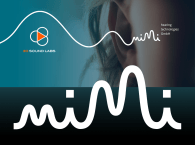
At CES 2017, Dirac introduced the world to its Dynamic 3D Audio solution featuring patent-pending Dynamic HRTFs (head-related transfer functions) that crack the code of the industry’s foremost challenges. The Swedish company, one of the world’s leading digital audio processing and sound enhancement has meanwhile continued to perfect its Dynamic 3D Audio platform, which removes a major barrier to a truly convincing immersive AR/VR experience. Second-generation Dirac VR includes an upgraded 3D audio engine that produces the most lifelike and accurate virtual soundscapes to date, improved software efficiency, and a Unity plugin that makes the solution available to content developers worldwide.
"Producing realistic audio experiences in virtual environments is one of the most challenging projects to be tackled by our industry; yet we, as both an industry and company, understand the enormous opportunity presented by effective and immersive VR experiences – for which a perfected 3D audio solution is required,” stated Mathias Johansson, Dirac Research’s Co-Founder & CEO. “With the second-generation Dirac VR solution, we proudly deliver to our industry the next critically-important tool to bringing our virtual dreams to life.”
With its MWC debut, Dirac VR is now equipped with an upgraded 3D audio engine, increased power and processing efficiency, and a Unity plugin – delivering to manufacturers, Unity content developers, and end-users, alike, the most sophisticated VR/ AR audio solution to date.

Through the upgraded 3D audio engine, Dirac VR produces improved audio performance, smoother sound renderings, and more accurate positioning of sound in the virtual plane. While the first generation solution allowed for the fixed positioning of individual sound sources on the horizontal plane, alone, Dirac VR now allows for dynamic positioning on both the horizontal and vertical planes – generating a 360-degree ‘audio sphere’ around each end-user, where sound moves freely in all directions.
According to Lars Isaksson, Dirac General Manager & Business Director of AR/ VR, this audio engine achievement provides content developers with increased flexibility in their virtual soundscape designs, and end-users with a substantially more realistic and lifelike virtual experience.
“By fixing sound sources in the horizontal plane, virtual environments such as movie theaters can be recreated with pinpoint accuracy – as both the end-user and the audio sources remain in static locations,” stated Isaksson. “Our second-generation Dirac VR, however, places each user at the center of an ‘audio sphere’, thereby allowing users to experience, for example, the sound of wind whipping as it swirls around one’s head or an airplane arriving and departing on a tarmac.”
Yet, despite these performance upgrades, the Dirac VR solution has also increased its overall processing efficiency through the further optimization of CPU and memory usage. The second-generation solution boasts one-degree resolution with an extremely small CPU and memory footprint, thereby making it an ideal solution for power-constrained devices.
"With improved audio performance, increased processing efficiency, immediate availability to Unity content creators, Dirac VR is now poised to deliver true-to-life audio experiences to consumers around the globe,” concluded Johansson. “We’re excited for more people to demo the solution at Mobile World Congress and realize the astounding future of immersive virtual environments made possible by convincing 3D audio.”
Dirac VR will be available for demo at MWC 2018, from February 26 through March 1, at the Dirac Booth located in Hall 2, Stand 2B64MR.
www.dirac.com






